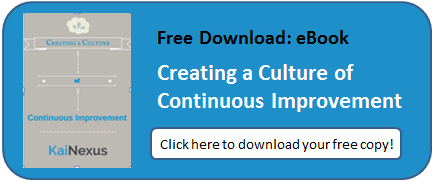 Value stream mapping (VSM) is used to visually depict, analyze, and improve the flow of materials and information through end-to-end processes. It is an effective method of identifying waste and opportunities for error. It is used by companies who have adopted the Lean Manufacturing or Lean Sigma business methodologies, as well as by others who are practicing continuous improvement. The visualization of value stream maps often makes bottlenecks, unnecessary activities, and information flow problems more readily apparent, making it easier for stakeholders to agree on opportunities for improvement. The best practice is to approach the initiative in the following phases.
Value stream mapping (VSM) is used to visually depict, analyze, and improve the flow of materials and information through end-to-end processes. It is an effective method of identifying waste and opportunities for error. It is used by companies who have adopted the Lean Manufacturing or Lean Sigma business methodologies, as well as by others who are practicing continuous improvement. The visualization of value stream maps often makes bottlenecks, unnecessary activities, and information flow problems more readily apparent, making it easier for stakeholders to agree on opportunities for improvement. The best practice is to approach the initiative in the following phases.
Document the Current State
It is important to start by selecting and training a cross-functional team that includes representatives from each function involved in the process or area to be mapped. They should be people with firsthand knowledge of the target process and those who support or supply materials or information to the process.
If location and environment play a role in the process, the team should physically walk the path of the material flow, while documenting each step. The flow of information and communication is just as important as the flow of materials, so it should be discussed and carefully documented as well.
Evaluate and Verify
Once the current state value stream map is created and the team agrees that it is a correct representation of today's reality, it should be shared with everyone involved in the target process to ensure that everyone agrees that it is both correct and complete.
Next, examine the process to find limiting factors, waste, and inefficiencies. For each problem, quantify the impact in terms of cost, time, and quality. Be sure to focus on the root of the problems, rather than their symptoms.
Improve
Come up with solutions for each of the identified problems that address the root causes and create a new value stream map that depicts the proposed improvements. We can also step back and take a fresh look at what the process could or should be, if we started from scratch. Combined, this will become your future state value stream map. It should be shared with all process participants so, again, that they can offer feedback and verification.
Once there is proper buy in, we can work to create the future state by implementing our changes, with enough time between to allow the impact of each to be calculated.
Then, we can modify all supporting documentation and training materials to indicate the changed processes or procedures. Everyone impacted by the change should be trained and their ability to execute should be validated.
Monitor and Maintain
In order to measure the long term impact of the improved value stream, key performance indicators should be established. The team should closely watch to make sure that the new processes are adhered to. Once the improvements are validated as having a positive impact, look for opportunities to apply them to other processes or areas of the organization.
Value stream mapping is a useful tool for any continuous improvement effort. The details are important, however, so be sure to thoughtfully execute each component in order to get the maximum positive results.




Add a Comment